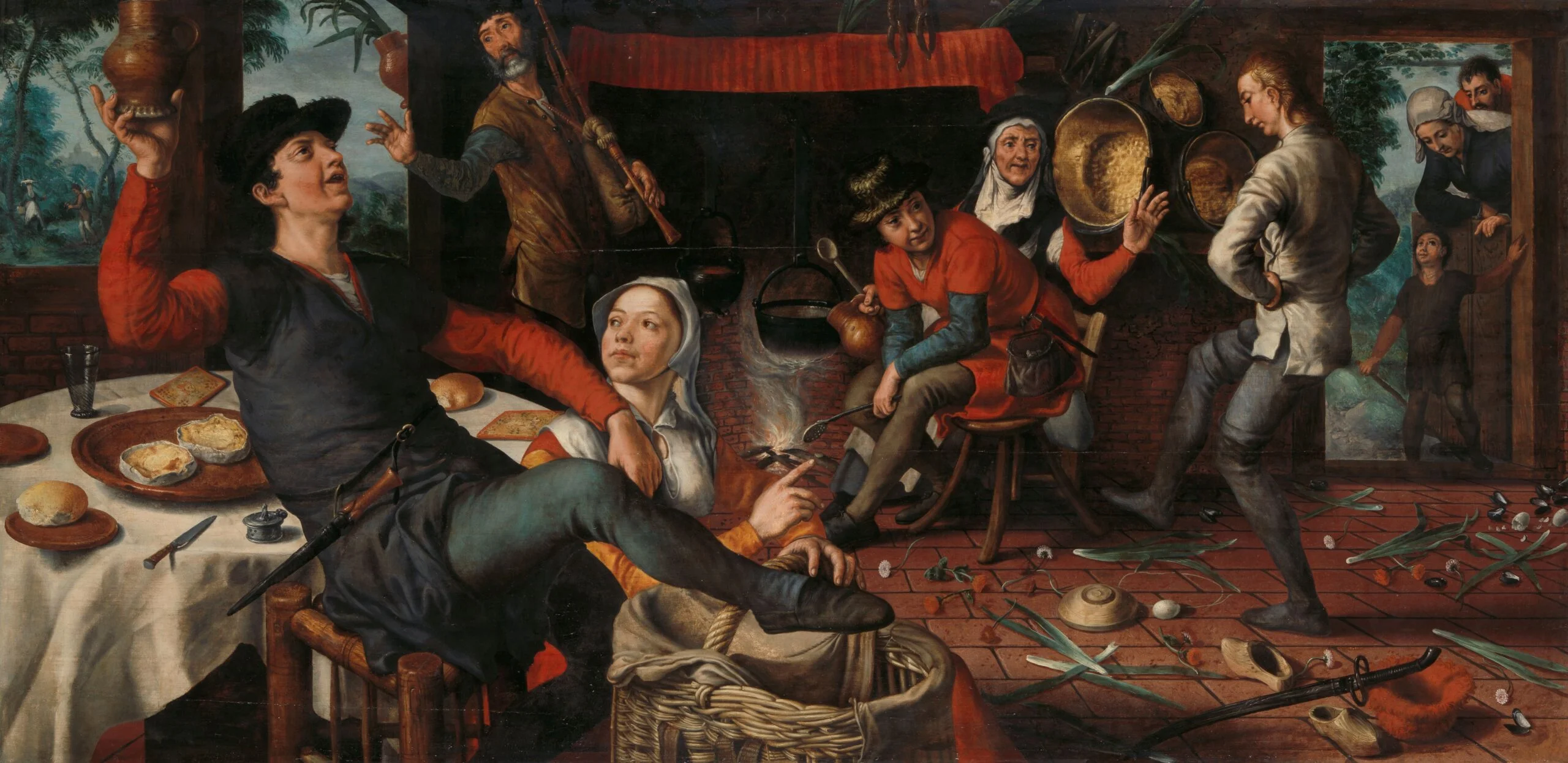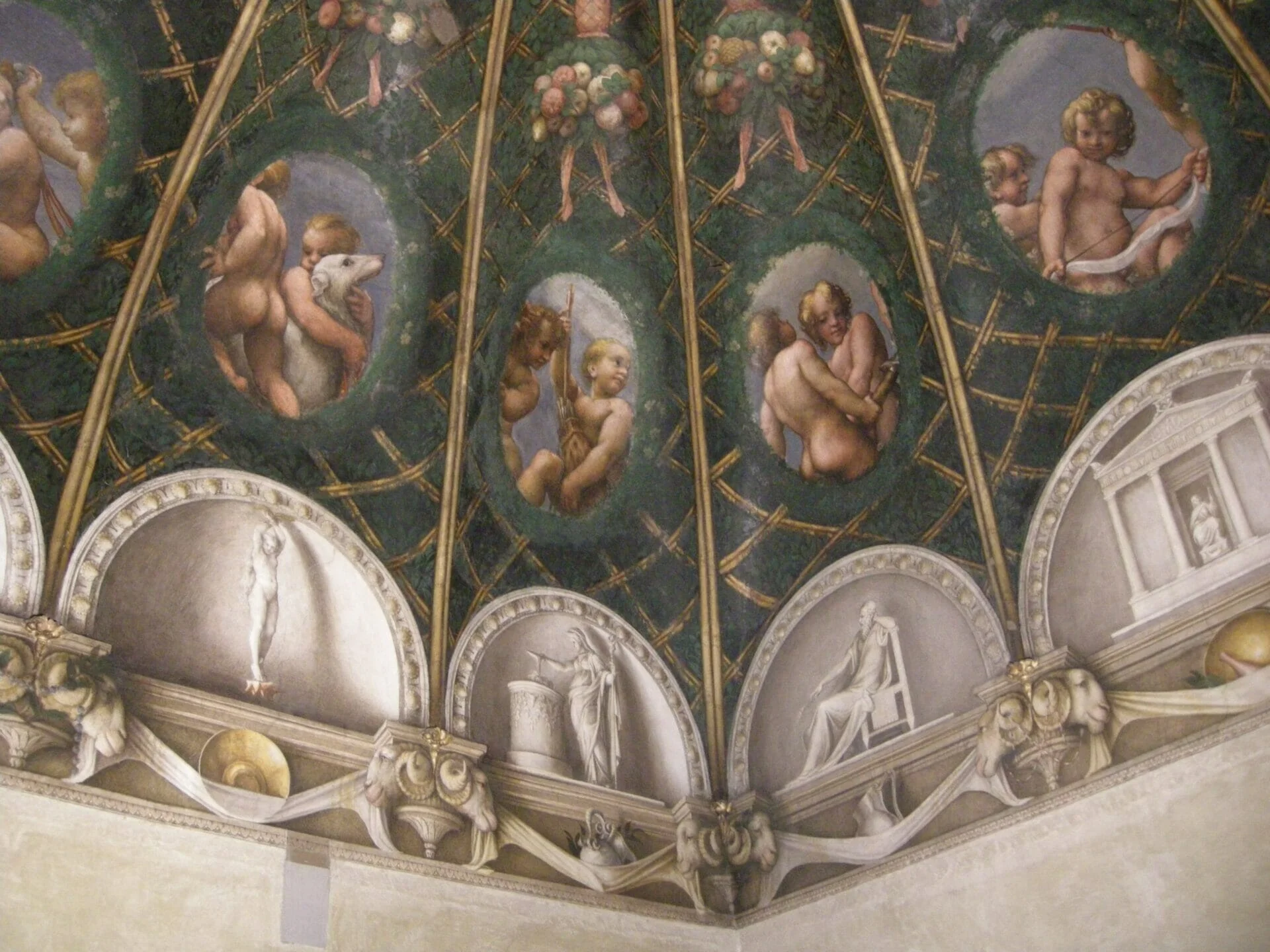
The Chamber of the Abbess | The impossible art reproduction
Artist
Year
Country
Format
Material/Technique
Chamber of the Abbess is a work by Antonio Allegri, known as Correggio. It belongs to the early stage of his mature phase when a progressive softening of the physiognomies and a renewed softness of the drawing prevail. They delineate Correggio’s figures, and his colors, giving volume to the forms.
The Saint Paul Chamber (Camera di San Paolo), also known as the Chamber of the Abbess (Camera della Badessa), is located in the former Monastery of St. Paul in Parma. It was a room in the apartment of Giovanna da Piacenza, abbess of the monastery since 1507.
The vegetable vault
For the first time, in front of demanding fresco work, a young Correggio decided to enclose within these four walls his homage to the artists who contributed to his training, and to those who represent real stimuli for him.
The herbaceous pattern that covers the entire ceiling, enriched with garlands of fruit and boxwood ovals, is a tribute to his master Andrea Mantegna, specifically his Camera degli Sposi in Mantua, and the Pala della Madonna della Vittoria, from which Correggio takes the idea of the vegetable vault.
Correggio and Mantegna’s lineage
Correggio and Mantegna’s lineage is not surprising, considering that Correggio decorated the Cappella Funeraria (funerary Chapel) of his master, thus becoming his spiritual heir. But if the viewers look closer when they are in the Chamber of the Abbess, they can discover other influences, by artists working at the same time as Correggio.
The representation of fake sculptures in the lunettes, painted in perfect trompe-l’œil that makes them three-dimensional and realistic, could find a precursor in the false reliefs that decorate the Sala della Galatea (Galatea’s room) at the Villa Farnesina of Agostino Chigi in Rome. In this architechture, Baldassarre Peruzzi, Sebastiano del Piombo and Raffaello Sanzio worked around 1512.
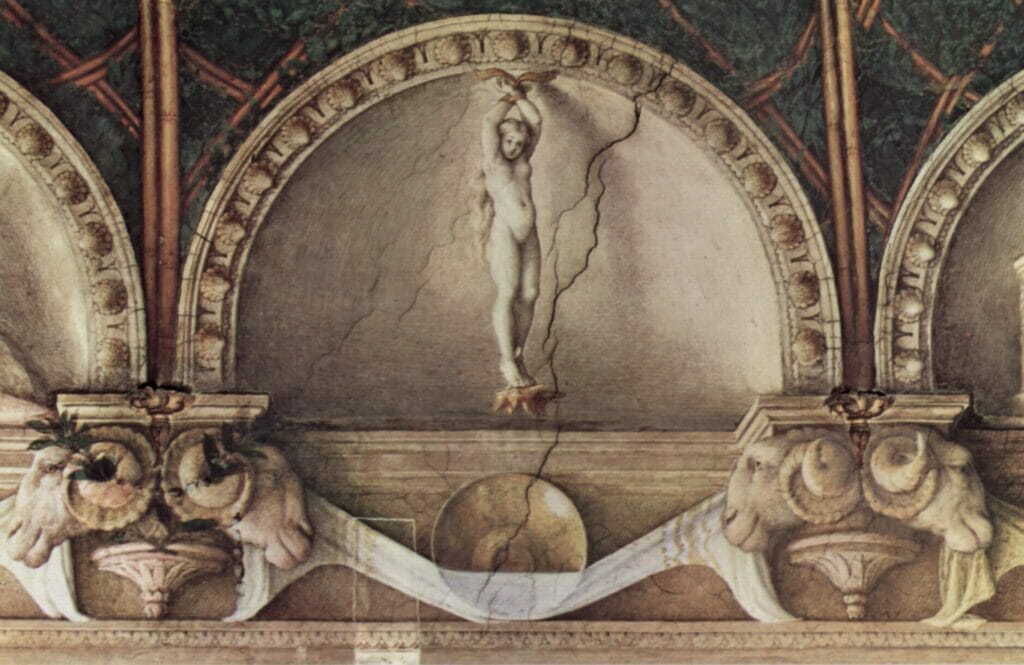
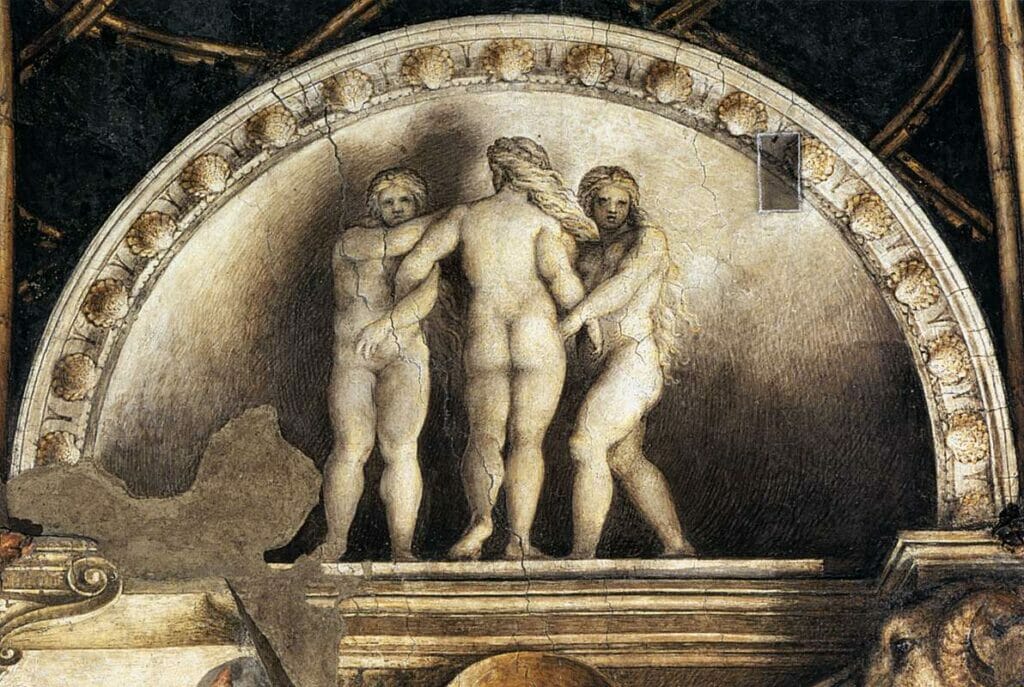
Art in the age of mechanical reproduction
The most curious aspect of this oeuvre, however, is that it is impossible to capture in a photograph. This is a remarkable failure, in our era of Walter Benjamin’s technical reproducibility of art.
No reproduction can replace live vision, an experience more complete and satisfying because it implies our presence in front, or like in this case inside the oeuvre. This Chamber is proof of that truth. If the viewers are not there, free to move, get closer, look up, turn around, and focus on the many details, they will never understand its beauty as a whole.
Any photographic reproduction shows only part of that beauty: a visual synecdoche unsuccessfully aspiring to grasp the whole masterpiece.
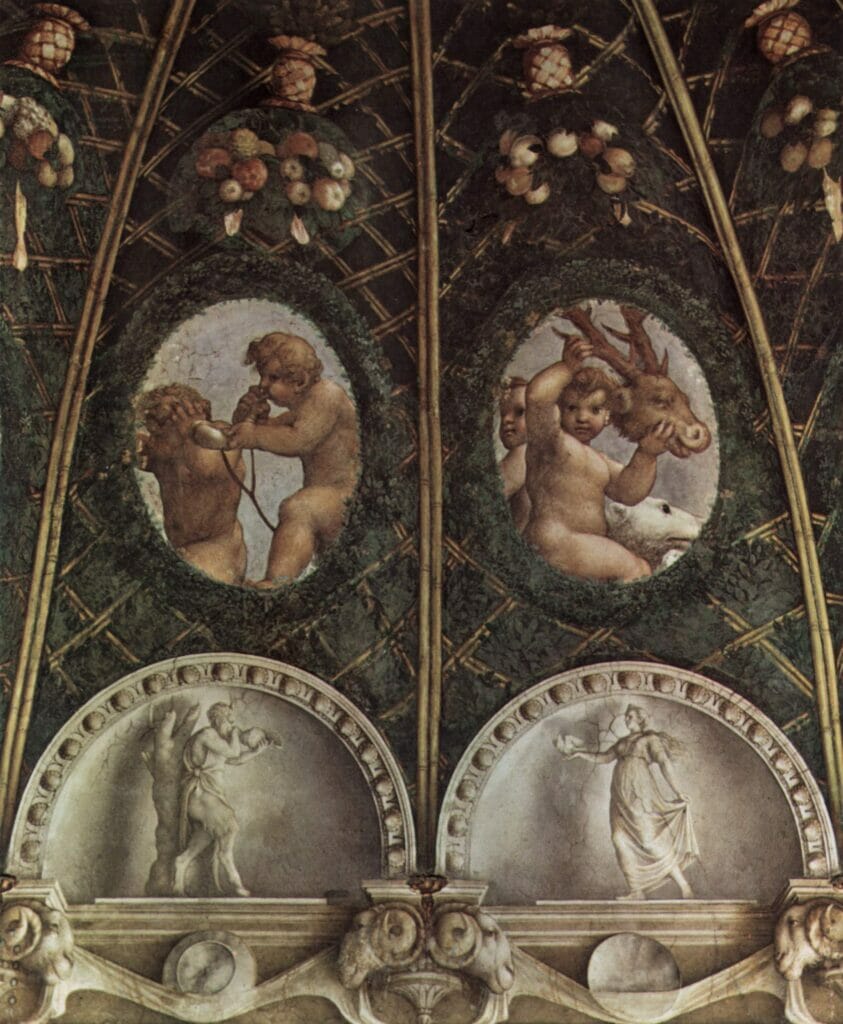
Tag




